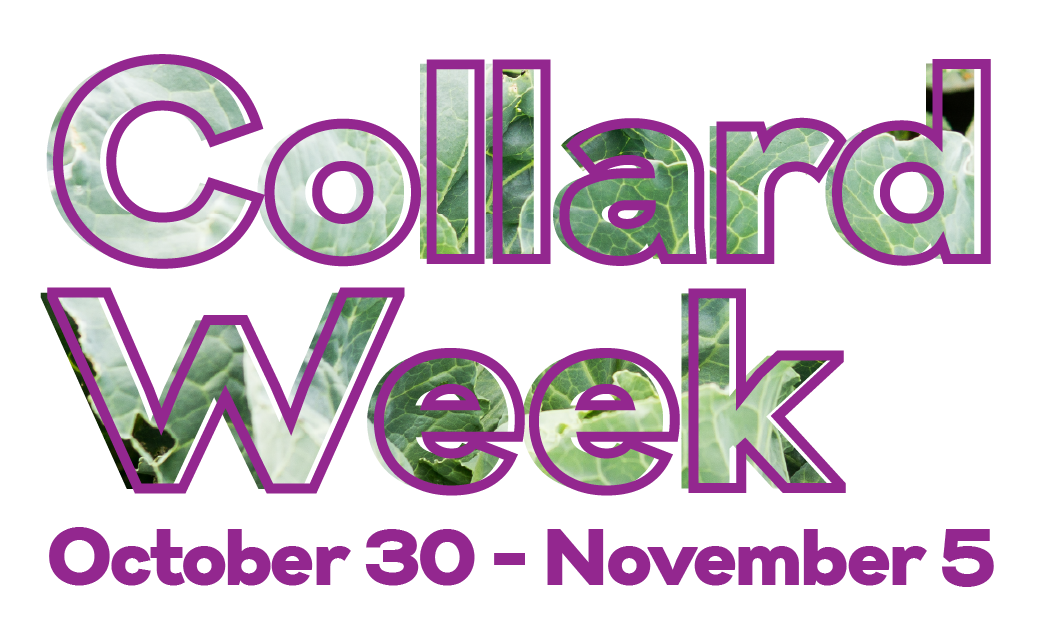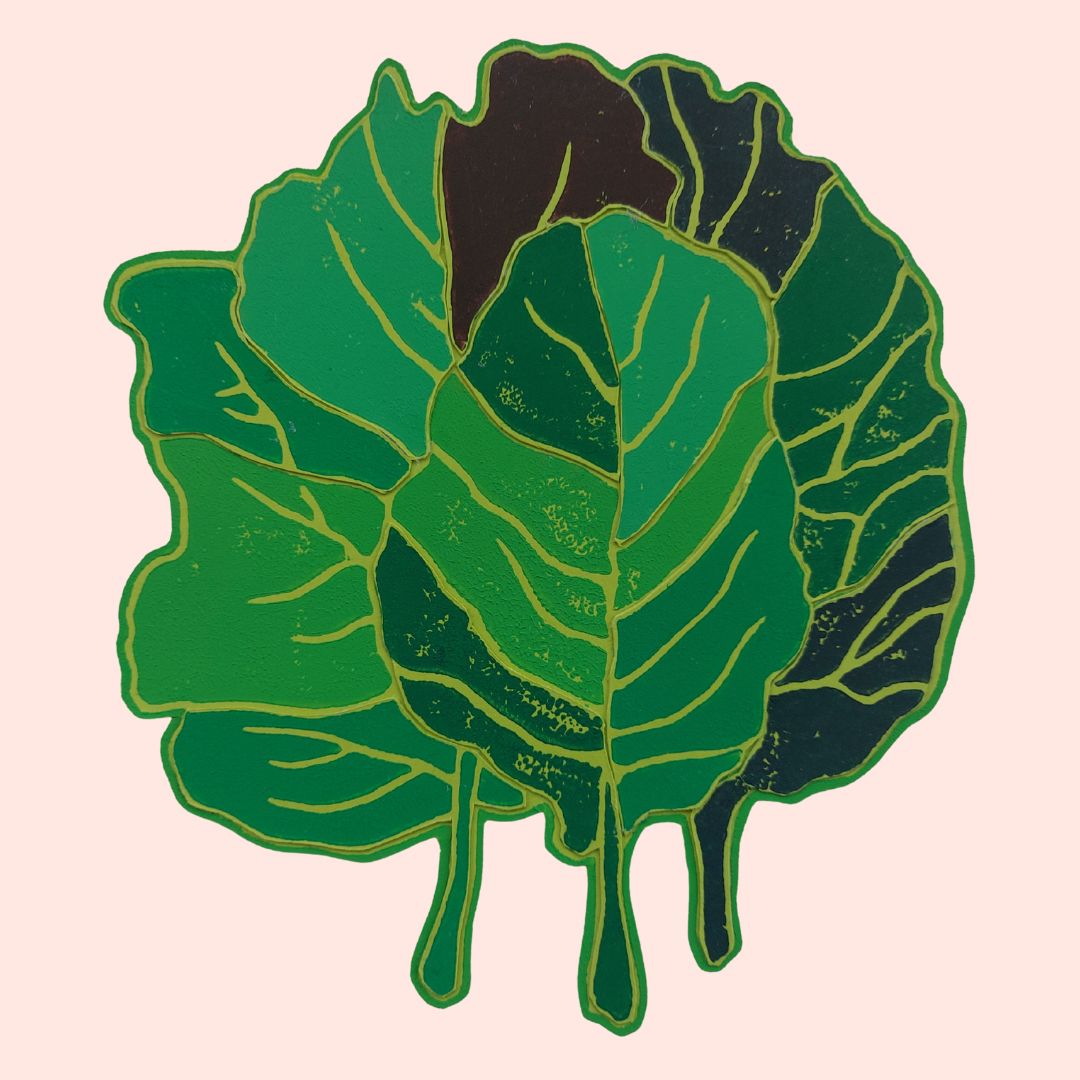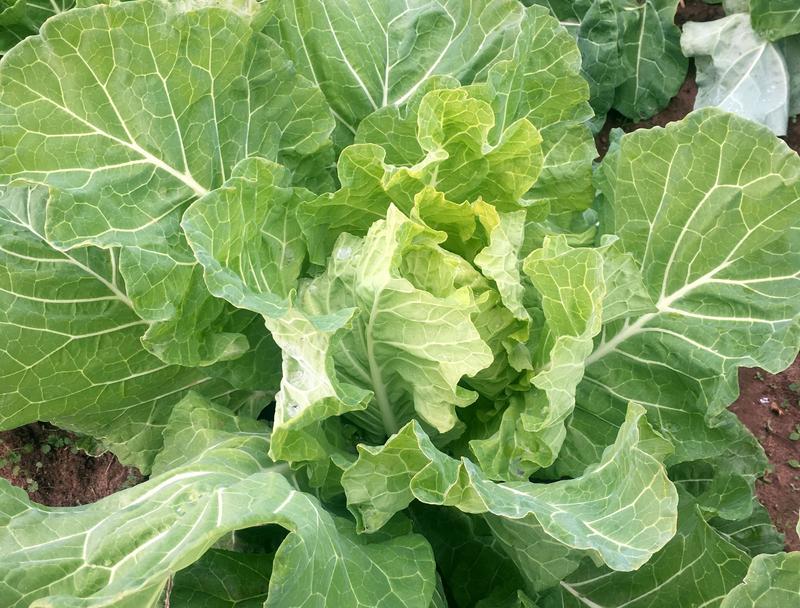By Mara Welton, Director of Programs

It’s finally Collard Week — though anytime is a perfect time to celebrate these glorious greens! We are entering the months when frost becomes a possibility in the low points of our nation’s topography, which is when collards start tasting their best. You should be seeing these gorgeous huge leaves in your gardens, grocers and farmers’ markets this time of year, as their impressive photosynthesizing paddles beckon you to try them in your kitchen in all sorts of ways!

Slow Food USA featured collards as one of the key crops in our 2023 Plant a Seed campaign, and all year long, Plant a Seed has centered greens because of their incredible nutrition, adaptability, flavor, and perhaps most importantly, their presence in many communities worldwide. In the US they are grown primarily in the Southeast, but they are also popular further afield and are featured in key culturally significant dishes like feijoada in Brazil or caldo verde in Portugal. In his blog Afroculinaria, culinary historian Michael Twitty shares their reach: “Collards are not African, they are temperate and Eurasian in origin, but their consumption, and with them — turnip, kale, rape, mustard and other greens are a healthy blend of tastes — West and Central African, Scottish, Portuguese, German and the like. Many culinary historians agree that the green craze in the South is supported by tastes for spring greens among Celtic and Germanic Southerners but was really spearheaded by people of African descent.” In the American Southeast, there are around a dozen collard green festivals every year, from Tennessee to Georgia and the Carolinas.

The particular collard we included in the Plant a Seed kit and campaign is the Ultracross Collards (Brassica oleracea). Ultracross Collards are the result of a national heirloom collard trial spearheaded by the Utopian Seed Project. This seed contains the natural crosses of 21 colorfully named heirloom varieties like the Fulton Shroud Collard, Tabitha Dykes Collard, Green Glaze Collard and Old Timey Blue. The Ark of Taste variety Yellow Cabbage Collard is one of the featured varieties in this special mix of seeds; also known as the Carolina Cabbage Collard, the plant differs from other varieties as it has thinner leaves, with finer veining and more of a yellow tone to its shade of green. Collards have steadfast champions in our partners at The Heirloom Collard Project, which is working to ensure that everyone learns of this incredibly biodiverse group of greens through their programming and trials with growers.
Ultracross Collard seeds are ideal for the home gardener with limited space who really want to have every seed planted produce something different. From Chris Smith, Utopian Seed Project Executive Director: “This seed mix represents a great chance to plant out a large quantity of different genetics and save seeds from the survivors. Where each and every one of you take this collard population is only limited by your imagination.”

No matter what type of collard you encounter, there’s so many benefits to working it into your diet! From their nutritional heft (so many vitamins, calcium and iron!) to their inspirational flexibility in the kitchen, it’s easy to see why so many cooks are inspired by these greens, creating everything from your Southern style collards to a potlikker martini to the Collard Sandwich made famous by the Lumbee tribal community of North Carolina.
This week we have some rich content for you while you enjoy collards in your region! We invite you to check out our Collard Week schedule and follow along. Some fun ideas for engaging:
- Take a deep dive into collards with our Collard Bingo Card (hint — making a collard sandwich is one of the squares!)
- Check out Collard Week videos from our partners Culinary Breeding Network and Heirloom Collard Project from 2020 to hear from experts in the field!
- Fascinated by all of the amazing heirloom names? In the spirit of good fun, Slow Food USA interns created this Heirloom Collard Name Generator. Share your heirloom collard name with your collard-loving friends.
- Make some art featuring collards!
- Revisit the Greens Zine from our Plant a Seed 2023 campaign and read about collards.
- Check out the Collards Zine from Crop Stories for poetry and stories about collards.
- Cook a collard recipe or make a collard beverage and share with friends.
- Join us on Wednesday for a Slow Food Live event to Holler for Collards in the Kitchen with Culinary Artist and Preservationist Gabrielle Eitienne and seed champions Bonnetta Adeeb and Chris Smith.
- Head to your farmers’ market, garden or local farm and seek out collards that your farmers are growing. Get a selfie with a collard, and then tag and post to share what you’ve found! #collardweek2023, #hollerforcollards, #plantaseed2023, @slowfoodusa, @heirloomcollards, @southernexposureseedexchange
However you engage with these glorious greens this week, we hope you learn a little, share with friends, eat a lot of greens and holler for collards all week long!
Collard Chips
Makes 2 quarts of chips
Ingredients:
- 10 collard leaves
- Oil of choice (avocado and olive are good choices)
- Salt
Procedure:
- Preheat oven to 275ºF (use convection setting if you have)
- Inspect leaves, wash if necessary. Dry leaves.
- Remove the central rib of each leaf by cutting it out.
- Stack the leaf portions together and cut into chips — 1-2” squares.
- Toss leaf squares in a large bowl with a drizzle of oil — use only enough to lightly coat each leaf. Massage leaves in bowl to coat. Add more oil if necessary.
- Arrange leaves on sheet pans — preferably on a rack on a pan to help them crisp up consistently. Try to keep leaves from overlapping to ensure even drying.
- Bake in oven for 10 minutes, toss leaves, remove any that are browning and return pan to oven to finish cooking for up to 10 more minutes depending on your oven. If you have a convection setting, this process will be much quicker.
- Once all leaves are crisped — toss with salt or seasonings of your choice (herb salts are a fun choice).
- Make sure leaves are cool before storing in an airtight container!

